Whale Sharks of Isla Mujeres
Swimming with a whale shark – the ocean’s largest fish is something that seems to be on many diver’s bucket lists. These animals can reach up to lengths of over forty feet/twelve meters, and weigh over 41,000 pounds, so getting up close and personal with just one of these gentle giants is something truly humbling. Imagine now, the ability to immerse yourself within not one, but hundreds of migrating whale sharks. Sounds too good to be true, right? If you’ve been looking for the opportunity to swim alongside feeding whale sharks, breaching mantas, and potential encounters of even more marine species, then the waters off Isla Mujeres are where you should be looking.
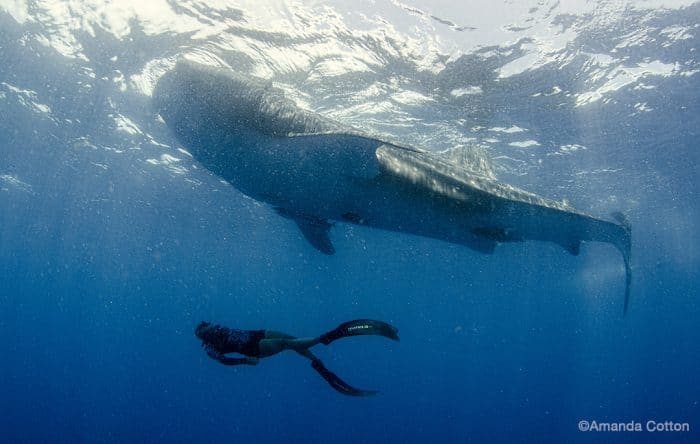
Every year the Yucatan Peninsula-specifically the waters surrounding the state of Quintana Roo become a feeding ground for hundreds of migrating whale sharks. The sharks are there to feed on a massive spawn of bonito (small Atlantic Tuna) eggs that are present from May through September. A Cotton Photo (ACP), founded by underwater photographer and Women Diver’s Hall of Fame member Amanda Cotton, has been heading down to Isla Mujeres for the last eleven years to partake in this incredible gathering. As full disclosure, as well as being a writer and videographer for DeeperBlue.com, I’m also a team leader for ACP on this expedition.
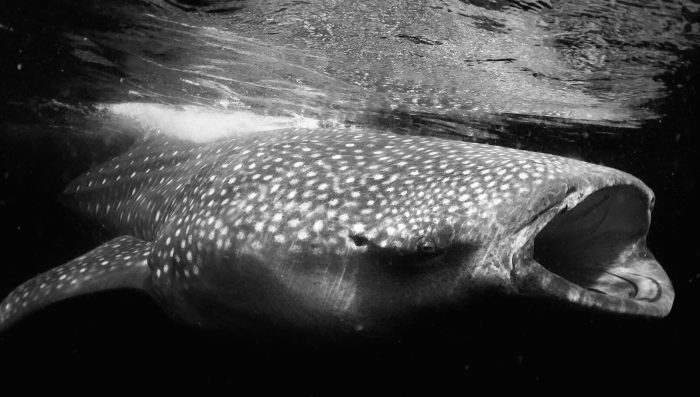
ACP’s Whale Shark Expedition, strategically scheduled around the lunar cycle each year to maximize the chance of ideal encounters, is a total of six days-two for travel and four days on the water. Traveling to Isla is a breeze (see below for travel info.) There is a team briefing the night you arrive on the island to hear the rules/guidelines of the coming days, as well as meet the rest of the group. The mornings start with a 7:30am launch time from Playa Norte, where you wade out into the water to meet the boats. For this reason, I recommend bringing along a dry bag for your belongings you wish to keep dry. It’s about an hour ride out to the stomping grounds. As you get closer to where the whale sharks are feeding, you will hear the captains in the surrounding area staying in radio contact in order to let each other know where the sharks are.
You’ll know you’ve found the feeding grounds when you glance over the side of the boat and see nothing but countless dorsal fins breaching the surface. This is a truly spectacular sight to see. The only thing better is the first moment you enter the water and realize you must keep your head on a constant swivel as to avoid being bumped into by a whale shark. These guys are the size of a school bus, so they’re not stopping for anyone! I will admit some days are better than others out on the water, but any day where I lose track of the number of whale sharks is a good day in my eyes. I think at one point, with my Paralenz pointed in one direction, I counted 6-7 whale sharks in the frame. Another amazing occurrence is when you come upon a whale shark feeding in an upright or vertical position known as static feeding, or what the locals refer to as “Coke bottling.” A shark will sit in this position for anywhere from a few minutes to over twenty, constantly sucking water in and filtering out the eggs. Just remember to keep an eye out behind you as well, because more often than not, there’s another whale shark you don’t see swimming right behind you!
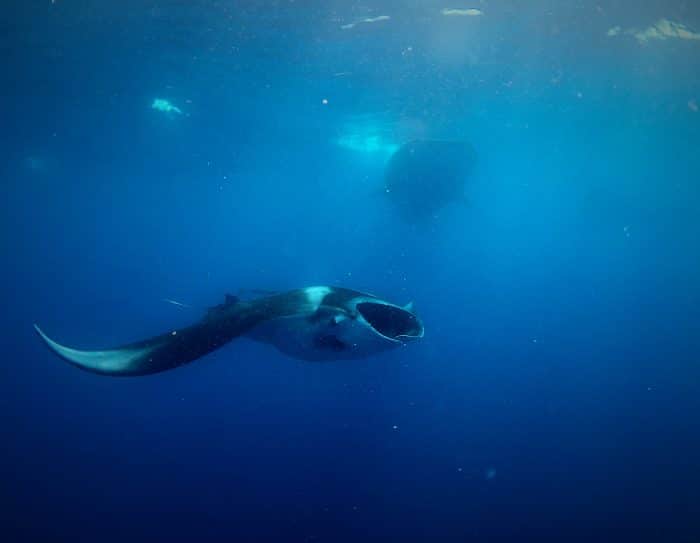
Rules & Regulations
In the past years, the Mexican government has put in place some rules in order to protect the migrating whale sharks, as well as keep the environment safe for tourists. The first of these rules is that there is no scuba with the sharks. Freediving/snorkeling is the only way to get into the water with these animals, which is more than suitable seeing as how they spend most of their time on the surface. You must wear some form of flotation device, which, when traveling with ACP, means either a wetsuit or a skin of some kind. There are of course life jackets on the boat if you feel more comfortable wearing one, but it is not required if you’re wearing a suit.
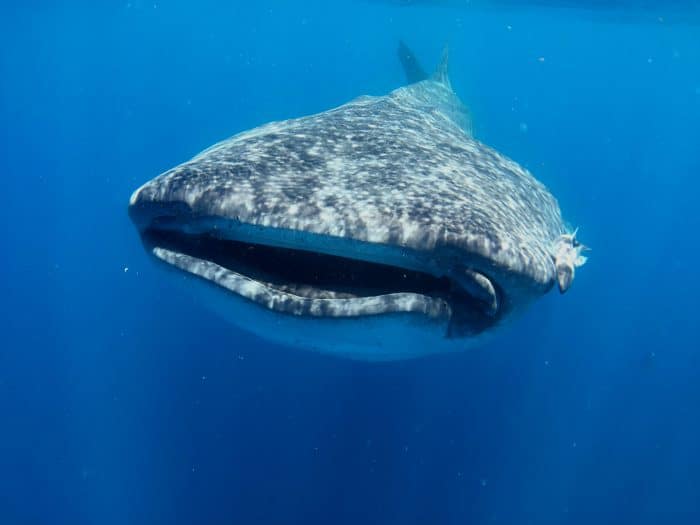
When it comes to photography, lights and strobes of any kind are not allowed. Again, the sharks spend most of their time on the surface on the water so there is more than enough ambient light for photos. As most other wildlife trips go, the touching of these animals at any time is prohibited. The captains do a pretty good job of making sure that everyone stays at least a meter away from the sharks at all times.
Later in the afternoon, you will start to notice the number of boats lessoning, and the whale sharks, after gorging themselves on eggs, will soon begin to dive down to the depths to digest the day’s haul. All boats must leave the area by 2 pm. Then all that’s left is to sit back, relax, and enjoy the boat ride back to Isla Mujeres.
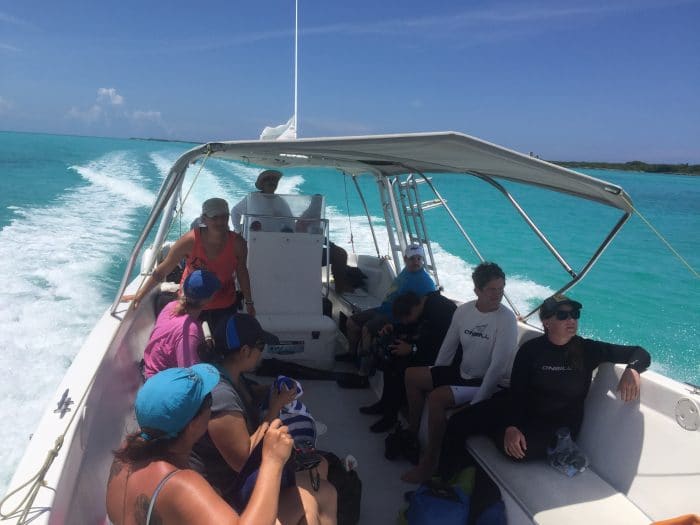
Location
What You Need to Know
Transportation
You will be flying into Cancun International Airport. If arriving on the trip’s official start/end dates, ACP arranges a shuttle that will take you from the airport to the ferry terminal. The Ultramar ferry runs every half hour from 5am-midnight. Tickets can be purchased in front of the ferry terminal inside their shop. I recommend buying a round-trip ticket, as the ticket does not expire. The price of a round-trip ticket will cost you approximately 300 pesos, or roughly 17 USD/14 EUR, just remember to keep your return ticket if you purchase one! After the 20-25 minute ferry ride over to Isla Mujeres most hotels are within walking distance if you are staying anywhere between the terminal and Playa Norte, however, a taxi stand is conveniently located to the left once you exit the terminal.
Where to Stay
The great thing about ACP is the hassle of finding/dealing with a hotel is taken care of. Hotel arrangements are made ahead of time and details are sent to you on a series of multiple emails that let you know where you are staying as well as maps to help you visualize. As it gets closer to the trip dates, you will also receive emails with reminders, last minute details, transportation information, etc.
Currency
Another great thing about Mexico is their use of both the Mexican peso and the US Dollar. You can use whichever is more convenient for you, however since the exchange rate is currently 18.63 MXN/1 USD/.86 EUR, if you either convert your currency to pesos ahead of time (i.e. airport, banks, ferry terminal) or choose to be charged in pesos with your credit card you will end up saving money in the long run.
Where to Eat & Drink
There are many restaurant options available on Isla, especially on the main street Miguel Hidalgo, located near Playa Norte. This is the street you’ll find most other vacationers as there are shops, bars, convenience stores, and of course restaurants. You can choose from Mexican, Italian, American, and almost everything in between. There are countless little bars on this strip for drinks/dancing, but my favorite would have to be Kokonuts and Faynes. They have great people, 2 for 1 happy hour specials, and music and dancing at night!
Extras
If you’re feeling adventurous, there are golf cart rentals at some of the hotels on Isla, and since the island is so small it doesn’t take much time at all to get from one end to the other! There is an “Observation deck” called Mirador Océanico on the south side of the island which has incredible views, various sculptures for photos, and little shops and stores around that area. There are also restaurants along the south end as well. Check out Casa de los Sueños for great barbecue and an even better view!
For more information about this expedition, check out acottonphoto.com or shoot them an email at info@acottonphoto.com
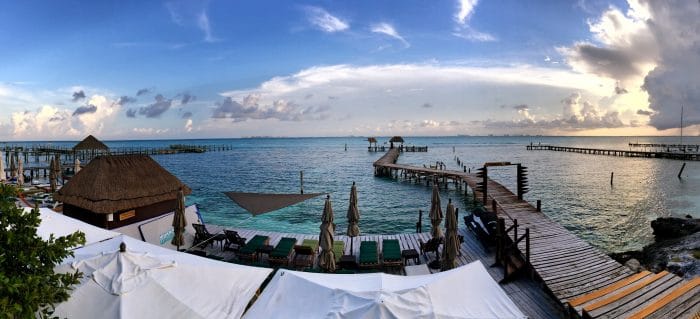
SOURCE: https://www.deeperblue.com/whale-sharks-of-isla-mujeres/

